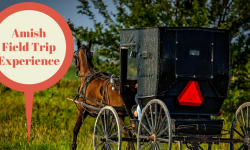Nature is more than just a background to our lives. There's a reason she's called "Mother Nature" and it's important that students learn, at least the basics, about the planet on which they live. Field trips spent in nature are not only effective educational outings but also surprisingly affordable for groups on a budget. Below are some ideas on how and where to teach your students about nature firsthand.
National and State Parks
If your student group has the opportunity and means to visit a national park, there's perhaps a no better way to learn about nature. From some of the oldest national parks like Yosemite, Yellowstone, and Rocky Mountain National Park to the (relatively) newer and somewhat underrated state and national parks, you can get no better seat for a festival of natural learning. Within the borders of the park, nature is contained, maintained, and preserved to be at its height of health and parks are a great way to learn about nature and conservancy efforts. Every national park is run by the National Park Service and most, if not all, offer ranger-led programs, guided tours, and talks on various topics from native wildlife to natural disasters and more.

Some of our favorites:
- Yosemite National Park - One of the most visited parks for its stunning geological features including Half Dome, glaciers, and granite peaks of the High Sierra.
- Yellowstone National Park - The first official national park and home to the highest number of geothermal features, including Old Faithful geyser.
- The Everglades - One of the best destinations to observe how ecosystems interact and one of the best national parks for viewing wildlife.
- Olympic National Park - This park has four distinct ecological regions including a temperate rainforest which ranks as the wettest place in the continental United States. You can explore the tide pools on the coast, hike through the rainforest, and climb the glaciated mountains in a single park.
- Arches National Park - Located in Utah, Arches is a phenomenal destination to observe the desert environment as well as rock formations. It's also one of the best places to stargaze as it has an extremely low amount of light pollution.
Nature Centers
Less "natural" than national parks, perhaps, but nature centers are certainly a fabulous way to teach about the world. Contained and monitored by highly informative staff, nature centers have the advantage of focused programs and curriculum-based activities. At a nature center, your students may learn about anything from sustainability practices to create a better future, Arbor Day and tree conservation, how to recognize animal tracks, and much more. Nature centers are wonderful destinations especially for young students who benefit from hands-on activities. There are a number of wonderful nature centers around the country, though chances are there is one near you. The Audubon Society has a collection of sponsored nature centers everywhere from Louisiana to California, to give you an idea of where to look. (P.S. Science museums and natural history museums are also good places to learn about nature although many are less focused than nature centers.)
Nature Walks
Nature walks are probably the easiest and most affordable nature-based educational option available. You can pretty much make any walk outside an informative nature walk with a little finesse. Take your students outside and discuss the weather, the animals you might come across, or try and identify the different plants you might see. You can do this in your local public park, head to a nearby lake or other natural landscapes such as a national park. A simple walk through town even can be beneficial and may open your student's eyes to the presence of nature.
Farms/Ranches
Taking your students to a teaching farm or ranch is an exciting prospect, particularly for students living in cities without regular exposure to domestic livestock and farming practices. Many children and students, even some adults, grow up without ever having seen a cow up close. Animals, too, are a part of nature and should be not only understood but respected. If we didn't have animals, our diets would be very limited. That being said, understanding and respecting the farmers that keep America running smoothly, growing corn and soybeans for fuel as well as food, raising the cattle and pigs we enjoy in our meals, is important for the foundational fabric of our nation. Okay, now that my rant is over, let's get to some farms and ranches.
Learning farms can be based on anything from tree farms in the Pacific Northwest (the World Forestry Center in Portland is a very good one), to dairy farms in Wisconsin or even a dude ranch in Nevada. Hinchley's Dairy Farm in Cambridge, Wisconsin, is an excellent starting place for northward bound student groups. Students can feed the barnyard animals, milk a cow, see the baby calves in the nursery, and even ride a hayride through the crop fields where soybeans, corn, wheat, and alfalfa are grown. Learn about growing fruit at farms in California, the history and continued practice of cattle driving at a ranch in Texas, and so much more! Chances are, you live near a farm of some kind so call ahead and see if your student group would be welcomed for a tour! It's an excellent way to show the student how humans can interact with nature to the benefit of everyone!
Finally, like nature centers, botanical gardens are quietly contained versions of nature focusing on specific aspects, which is in this case, plants. Botanical gardens are gorgeous and wonderful destinations for any student group, no matter the age. Many gardens have the option of guided tours although many student groups find it better to do self-guided tours to go at their own leisurely pace. Some of the best botanical gardens range from strict arboretums to fully realized biospheres containing nearly every ecosystem on earth. Depending on your location and budget, your group might want to visit the Hawaii Tropical Botanical Garden, the Atlanta Botanical Garden where art sculptures mingle with nature, the Dallas Arboretum and their fabulous Rory Myer's Children's Adventure Garden, or the most visited botanical garden in the country, the Brooklyn Botanic Garden.







